As a crucial tool in any electrician or DIY enthusiast’s toolbox, a malfunctioning multimeter can be frustrating and even potentially dangerous. But don’t panic- there are several steps you can take to troubleshoot and solve the issue.
If your multimeter isn’t working, don’t worry! There are a few things you can do to troubleshoot the issue and get your multimeter up and running again. In this blog post, we will discuss some common problems that can occur with multimeters and provide solutions for each one. We will also provide tips on how to prevent these problems from happening in the first place. Stay safe and keep your multimeter in good working condition by following our advice!
Common Causes Of Multimeter Malfunctions
Once you have ensured safe usage of the multimeter, there are a few common reasons it may not be functioning properly:
- The batteries may need to be replaced. Check the manual for instructions on how to replace them and try again with fresh batteries;
- The fuse in the multimeter may have blown due to an overload or incorrect usage. Consult the manual for directions on replacing the fuse;
- Damaged or bent probes can affect measurements, so check that they are fully intact before troubleshooting further;
- If none of these solutions work, the problem could be a malfunction within the multimeter itself and it may need to be repaired or replaced by a professional technician;
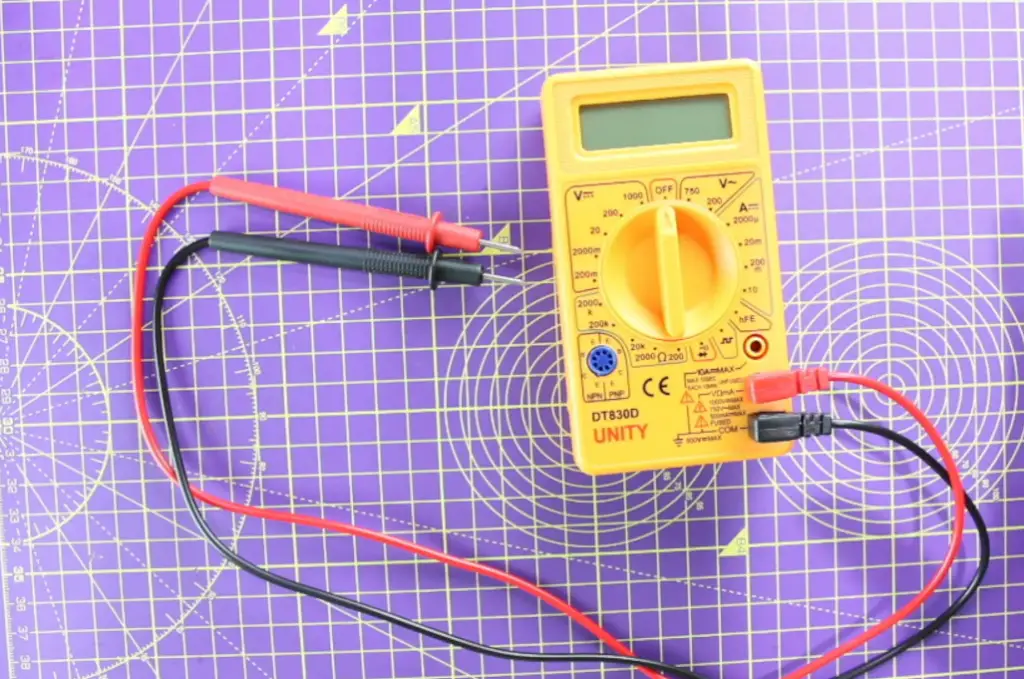
Things to Do When Troubleshooting A Multimeter
The Multimeter Should Be Used Properly – Check The Manual:
- Make sure the multimeter is set up correctly for the task at hand;
- Ensure that all connections are secure and the probes are properly placed on the correct terminals;
- Double-check that the settings on the multimeter (such as voltage or resistance measurements) are accurate for your task;
Check The Batteries:
- Replace any weak or dead batteries in the multimeter;
- Test the replaced batteries with another device to make sure they are working properly;
Inspect The Multimeter for Physical Damage:
- Look for any visible damage such as cracks, loose wires, or broken parts;
- Contact the manufacturer or a professional if there is severe physical damage;
The Resistance May Be Still High:
- Check that the circuit being measured is not connected to any power source;
- Try taking measurements in a different location or with different equipment;
- Make sure all connections are secure and there is no interference from outside sources;
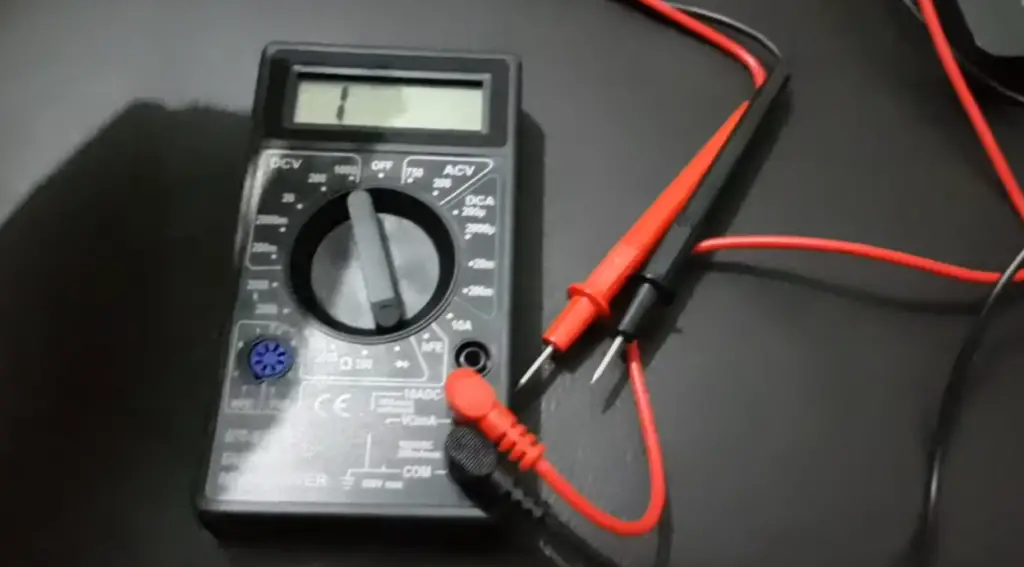
The Final Field Wiring Test:
- Disconnect all connections from the multimeter;
- Test the continuity and resistance with just the multimeter leads;
- If there is still no response, the problem may lie within the multimeter itself and it may need to be repaired or replaced;
- Contact the manufacturer for further assistance in troubleshooting and repairing the multimeter;
Transformers Should Be Tested:
- Multimeters are not always able to accurately measure the current in a transformer;
- It is recommended to test the transformer with separate equipment or consult a professional for assistance;
If your multimeter is not working properly, first make sure it is being used correctly and check the batteries. Inspect the device for any physical damage and try testing in different locations. If all else fails, contact the manufacturer for help repairing or replacing the multimeter. Remember to also test transformers separately as they may not give accurate measurements on a multimeter.
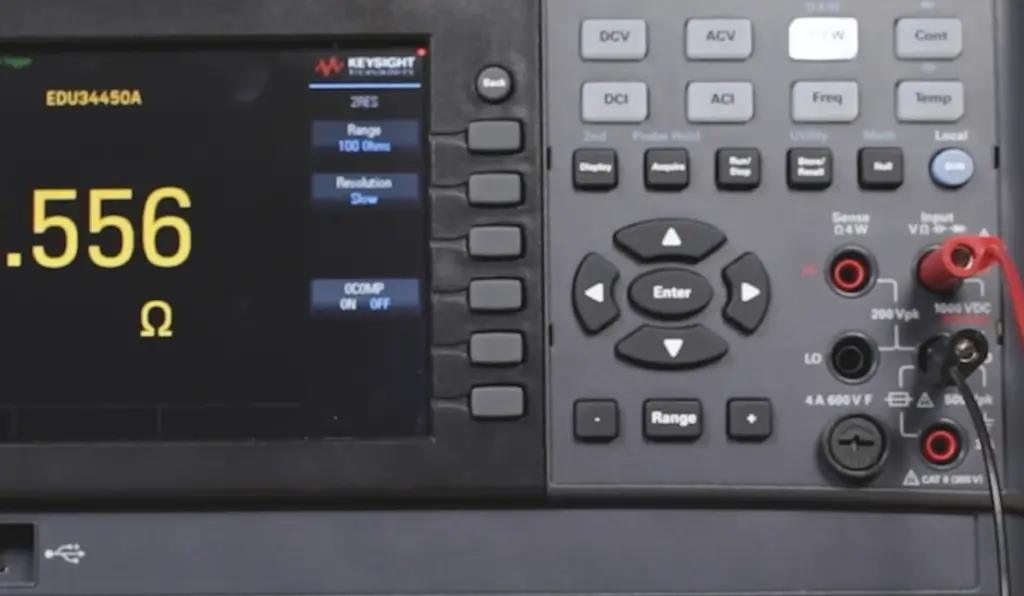
How To Test If Multimeter Is Working
Check The Battery
One of the most common reasons for a multimeter not functioning properly is a dead or weak battery. Make sure to check and replace if necessary.
Check The Fuses
Another potential issue could be faulty fuses. Consult your manual and replace any blown fuses.
If these steps do not solve the problem, it may be time to consult an expert or consider purchasing a new multimeter. Remember to handle with care and always follow proper safety precautions when using any type of testing equipment.
Test The Probe Leads
In some cases, the issue could merely be a faulty set of probe leads. Connect the red lead to the multimeter’s highest resistance setting and touch the black lead to the common terminal. The display should read infinity. If not, it may be time for a replacement set of leads.
Even with proper care, your multimeter can malfunction due to normal wear and tear or unexpected accidents. Don’t be discouraged – by following these steps and handling them with care, you can ensure that your multimeter remains in good working condition for as long as possible.

How To Use A Multimeter Safely?
Before troubleshooting a non-working multimeter, it is important to make sure you are using it correctly and safely:
- Read the manual for your specific model before using it for the first time;
- Make sure the multimeter is set to the correct measurement type (voltage, current, resistance, etc.) and range before use;
- When measuring voltage in an electrical circuit, always touch the probes to the circuit’s terminals rather than across energized wires to avoid shock or injury;
- If unsure about any aspect of usage, consult a qualified electrician or research online before proceeding with measurements;
Common Digital Multimeter Troubleshooting And Repair
- First, check that the power source is working properly and ensure that the multimeter is correctly connected to it;
- Next, check for loose connections or damaged wires in the circuit being measured;
- If the above steps do not fix the issue, try replacing the batteries or fuse in the multimeter;
- If these basic troubleshooting steps do not resolve the problem, it may be necessary to have a professional inspect and potentially repair or replace parts of the multimeter;
- It is important to note that attempting to repair a digital multimeter on your own can be dangerous and should only be done by qualified professionals with experience in handling electronics. Always make sure to follow safety precautions when using and troubleshooting a multimeter;
- Additionally, regularly calibrating the multimeter can help prevent any potential issues with accuracy in measurements. Consult the manufacturer’s guidelines for proper calibration procedures;
- In cases where the multimeter is beyond repair, it may be necessary to replace it entirely with a new device. Make sure to dispose of the old one properly to avoid any safety hazards;
- Remember, always prioritize safety when using and troubleshooting a multimeter. Seek professional assistance if needed and never operate a faulty or damaged device;

FAQ
How do you reset a multimeter?
First, make sure that the multimeter is powered off and disconnected from any circuits. Remove the batteries if applicable. Then, press and hold the “on/off” or “reset” button for several seconds before releasing it. Replace the batteries and turn on the multimeter to see if it is functioning properly again. If this does not work, try using different batteries or a different power source for the multimeter.
What are the common reasons for a multimeter to stop working?
Some possible reasons for a malfunctioning multimeter could be faulty wiring or connections, damaged components, or low battery power.
Can a multimeter be damaged?
Yes, a multimeter can be damaged if it is not used properly or if it experiences a power surge.
What should I do if my multimeter is not working?
First, try changing the batteries to see if that solves the issue. If not, check for any visible damage to the device such as cracked or broken parts. If there is damage, you may need to replace the entire device.
If there does not seem to be any physical damage, try calibrating the multimeter or consulting the instruction manual for troubleshooting tips. If these steps do not work, it may be time to contact the manufacturer for repair or replacement options. As always, make sure to read and follow all safety guidelines when using a multimeter.
In any case, it is important to have a backup multimeter on hand in case your primary one is not working. Regularly check and test your multimeter to ensure it is functioning properly before each use.
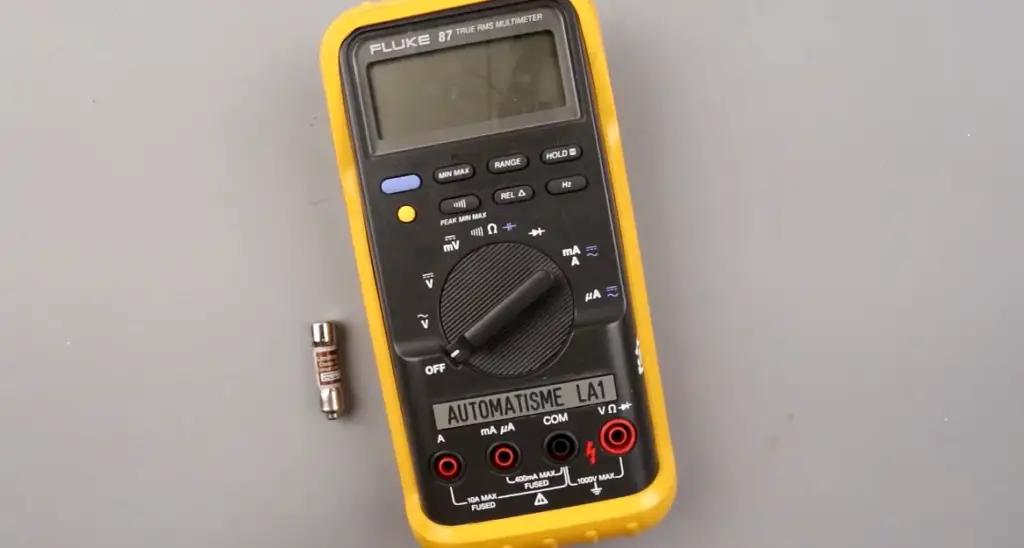
How do I know if my multimeter fuse is blown?
One way to check if your multimeter fuse is blown is by checking the display screen. If it is blank or showing abnormal readings, this could be a sign of a blown fuse. Another way to check is by visually inspecting the fuse and seeing if it appears to be damaged or broken.
How do I fix my analog multimeter not working?
First, check the batteries and ensure they have enough power or are not outdated. If they need to be replaced, do so with fresh, new batteries of the correct size and voltage.
Next, check all connections and make sure they are secure and properly connected. It may also be helpful to try using different probes or test leads.
If these steps do not solve the issue, it may be necessary to recalibrate the multimeter or have it serviced by a professional technician.
In rare cases, there could be an internal problem with the multimeter itself that cannot be fixed by the user and will require replacement. However, following these steps should help resolve any issues with a non-working multimeter.
How much does it cost to calibrate a multimeter?
The cost of calibration can vary depending on the type and brand of the multimeter, as well as the company performing the calibration.
Should I try to fix a non-working multimeter myself?
How do I turn on my multimeter?
First, make sure that the multimeter is properly connected to a power source. If it still doesn’t turn on, check the battery or the fuse for any issues. If necessary, replace them with new ones.
If the problem persists, try resetting the multimeter by pressing and holding the “on/off” button for several seconds. If this does not work, it may be time to consult a professional or contact the manufacturer for further assistance.
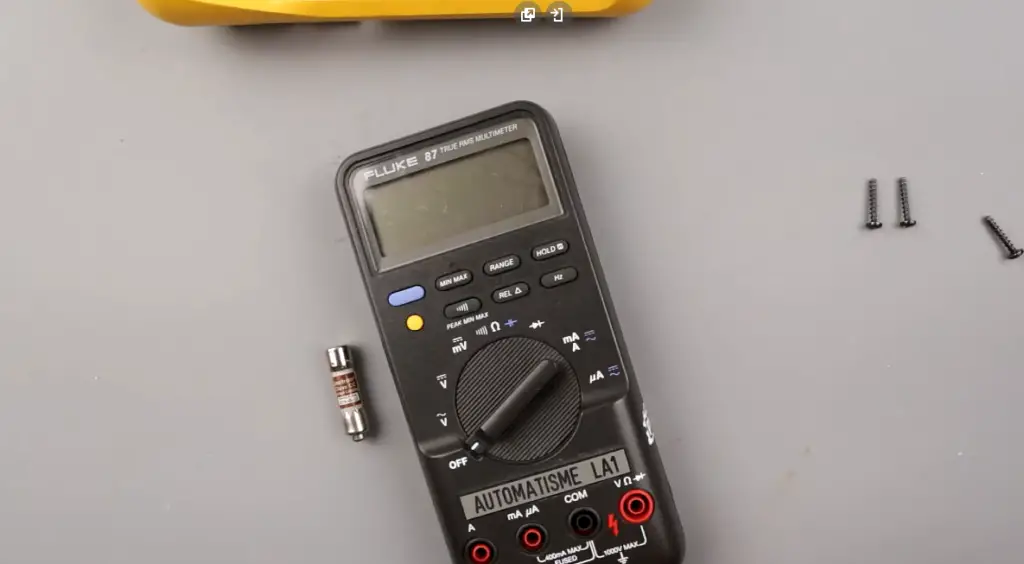
What should I do if my multimeter gives an inaccurate reading?
First, make sure that you have selected the correct measurement range for your specific task. It is also important to double-check that all connections are secure and free of any debris or damage.
If the problem persists, try recalibrating the multimeter or replacing any damaged probes. If these steps do not work, it may be time to consult a professional or contact the manufacturer for further assistance.
Remember to always follow proper safety procedures and never use a damaged or malfunctioning multimeter.
How do you manually calibrate a multimeter?
First, make sure that the multimeter is turned off before proceeding. Next, locate the calibration screw and adjust it until the display reads correctly when measuring a known voltage or resistance. Finally, recheck the readings with the known values to ensure accuracy. It is also important to regularly check the calibration of your multimeter as per the manufacturer’s guidelines.
If manual calibration does not fix the issue, it may be time to get a new multimeter. Other potential reasons for the malfunction could include damaged probes or loose connections. Be sure to check these as well before replacing the device.
Why is my multimeter not beeping?
There could be several reasons for this:
- First, check if the batteries are properly inserted and have enough power. If they do, try swapping out for new batteries to see if that solves the issue;
- Next, check the continuity setting on your multimeter. This function usually produces a beeping sound when there is a closed circuit, so make sure it is turned on and set properly;
If these steps do not solve the issue, it could be a problem with the internal components of your multimeter. In this case, it is best to contact the manufacturer or take it to a professional for repair.
How do I test a wire with a broken multimeter?
First, check the batteries and make sure they are still functional. If the batteries are dead or weak, replace them with new ones.
Next, check to see if any of the wires or connections are loose or damaged. Tighten any loose connections and replace any damaged wires.
If all else fails, try using a different multimeter to test the wire. If it works with the second multimeter, then the issue may be with your original one and it may need to be repaired or replaced.
It is also possible that there is an issue with the circuit you are testing, so double-check all connections before concluding that the multimeter is faulty. Keep in mind that multimeters can sometimes break or give inaccurate readings.
How do I know if my multimeter is calibrated?
To check if your multimeter is calibrated, you can use a known standard such as a battery or an AC adapter. If the measurement matches up with the expected value, then your multimeter is likely calibrated properly. If not, it’s time to calibrate or replace your multimeter.
What happens when you overload a multimeter?
If a multimeter is overloaded, it can cause damage to the device or even pose a safety hazard. It is important to always check the maximum rating of a multimeter before using it on an electrical circuit.
If your multimeter becomes damaged due to overload, it may display incorrect readings or not work at all. In this case, the first step is to remove the multimeter from the circuit and unplug any testing leads.
Next, you can try resetting the multimeter by removing the battery and replacing it after a few minutes. If this does not fix the issue, it may be necessary to have the multimeter serviced or replaced.
Can you get shocked using a multimeter?
It is possible to get shocked while using a multimeter if it is not properly handled. Always make sure to disconnect power before measuring voltage or checking for continuity, and never touch exposed metal on the meter while it is turned on.
If your multimeter does give off an electric shock, immediately disconnect it from power and inspect for damage. Do not continue using the device until it has been repaired or replaced.
Is it safe to use a multimeter on an outlet?
It depends on the type of multimeter and its settings.
If in doubt, it is safer to have a professional electrician perform any testing on an outlet.
What could cause a multimeter to not work properly?
There could be several potential causes for a multimeter not working properly, including damaged wires or connectors, a faulty power source, or simply dead batteries. It is important to check all of these possibilities before concluding that the multimeter itself is broken.
Can you replace a multimeter fuse?
The first step is to check if the multimeter fuse needs to be replaced. This can usually be done by unscrewing the back cover and locating the fuse. If it appears to be blown, you can replace it with one of the same ratings.
If replacing the fuse does not solve the issue, other possible causes could include a faulty power source or damaged internal circuitry. In this case, it may be necessary to seek professional help or purchase a new multimeter.
It is important to always follow safety precautions when troubleshooting and repairing a multimeter, as they deal with electrical currents. Be sure to disconnect from any power source before making adjustments or replacements.
Do all multimeters have a fuse?
No, not all multimeters have a fuse. However, if your multimeter does have a fuse, it may be the first thing to check if your multimeter is not working properly. If the fuse has blown, you can simply replace it with a new one of the same rating.
If your multimeter does not have a fuse or replacing the fuse does not fix the issue, there may be other problems at hand. One possibility is that there could be an issue with the power source for the device. Be sure to check and make sure the batteries are fresh and properly connected, or that the power cable is securely plugged in and functioning properly.
What is the most common cause of blown meter fuse?
The most common cause of a blown meter fuse is using a multimeter with an input that exceeds its maximum range. This can happen if the wrong setting or range is selected, or if the measurement taken requires a higher range than the multimeter can handle.
Do analog multimeters require batteries?
Yes, analog multimeters typically require batteries in order to work properly.
Where can I calibrate my multimeter?
Before troubleshooting any issues with your multimeter, it’s important to make sure that it is properly calibrated. You can check with local hardware or electronics stores to see if they offer calibration services, or search for a specialized calibration laboratory in your area.
How often should a Fluke Multimeter be calibrated?
According to Fluke, it is recommended that a multimeter be calibrated at least once a year. However, if the multimeter is being used in critical situations or environments where accuracy is crucial, calibration should be done more frequently.
How do you use a manual multimeter
- First, make sure the multimeter is set to the correct measurement mode (such as voltage or resistance);
- Next, connect the probes to the appropriate terminals on the multimeter;
- Finally, touch the probes to the circuit or component you want to measure and observe the reading on the display;
How do I check continuity without a multimeter?
If your multimeter is not working, you can try using a continuity tester or buzzer. These tools usually have two probes that you can touch the circuit to check for a continuous connection.
You can also try using a substitute tool such as a voltmeter or ohmmeter if available.
In some cases, simply replacing the batteries in your multimeter may solve the issue. If none of these solutions work, it may be time to invest in a new multimeter.
How often should you calibrate a multimeter?
It is recommended that a multimeter be calibrated at least once a year, or after any significant drops or damage.
How do you make a multimeter beep?
If your multimeter has a beep function, it is usually activated by pressing a button labeled “beep” or “sound”. However, if the multimeter is not making any sound when this button is pressed, it could indicate an issue with the device.
How do you check fuses with a multimeter?
First, make sure that the multimeter is set to the correct fuse setting. Then, touch one lead to each end of the fuse and check the reading. If it reads zero or a very low number, then the fuse is good. If it reads infinity or a very high number, the fuse needs to be replaced.
Why does my multimeter not go to zero in the AC voltage mode?
There could be several reasons for this, including a faulty internal component or an improper connection. First, try checking the connections to make sure they are securely attached and in the correct positions. If the issue persists, it may be necessary to have the multimeter professionally inspected or replaced.
Another possibility is that the multimeter may not be properly calibrated. In this case, calibrating or recalibrating the device should solve the issue.
If none of these solutions fix the problem, it may be time to consider investing in a new multimeter. A malfunctioning multimeter can cause unreliable readings and potentially put you at risk while using electrical equipment.
Can you hurt yourself with a broken multimeter?
Although it is unlikely, it is still important to take caution when dealing with a broken multimeter. Always disconnect the device from any power source before attempting to troubleshoot or fix it.
Useful Video: HOW TO FIX A MULTIMETER THAT DOES NOT WORK (MY TOP 3 PROBLEMS & REPAIRS)
References
- https://www.circuitspecialists.com/blog/dmm-troubleshooting-repair
- https://www.centraltis.com/news/step-by-step-how-to-for-troubleshoot-with-a-multimeter
- https://circuitdigest.com/tutorial/how-to-test-if-multimeter-is-working-or-not
- https://www.circuitspecialists.com/blog/dmm-troubleshooting-repair
- https://www.centraltis.com/news/step-by-step-how-to-for-troubleshoot-with-a-multimeter
- https://circuitdigest.com/tutorial/how-to-test-if-multimeter-is-working-or-not













Leave a Reply